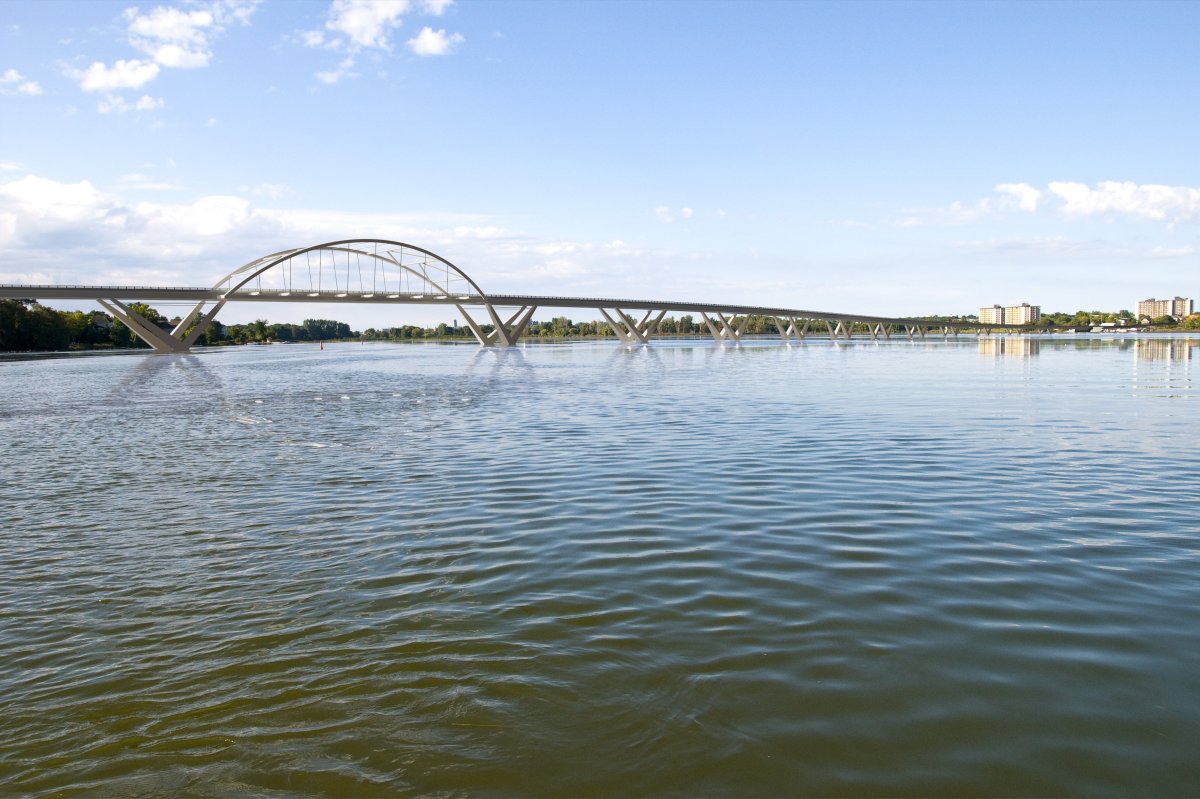The City of Kingston won’t be taking a back seat to private contractors when its largest ever infrastructure project is built next summer.

In fact, city officials have insisted on having a seat at the builder’s table before and after construction starts on the $180 million third bridge crossing.
This is a major departure from past projects where the city usually steps aside or takes a more distant oversight role once contracts are awarded. Building the 1.1-kilometre long bridge span linking John Counter Boulevard and Gore Road will be different.
The private international team led by Peter Kiewit Sons ULC, Hatch Ltd. and SYSTRA International Bridge Technologies has been chosen to design and build the fixed link that will be located midway between the LaSalle Causeway and Highway 401 on the Cataraqui River.
The contract was awarded through a so-called integrated project delivery (IPD) model, believed to be a first in North America.
“An IPD model is a relatively new innovative concept in infrastructure that has helped large infrastructure projects across North America be completed on time and under budget,” explained a report by Mark Van Buren, deputy commissioner of transportation and infrastructure.
Unlike traditional design-build models, the IPD team brings together the bridge designer/contractor and the bridge’s owner, plus city experts, to develop goals at the project’s outset, share information and accept their responsibilities as equal partners, he explained.

Get daily National news
“The entire team shares the financial risk and reward as an integrated team and participates in meaningful collaboration through co-location and shoulder-to-shoulder working relationships.”
He says the city’s ongoing involvement — wearing one of the white hard hats during the construction phase — will also allow the municipality to “explore innovation and opportunities for efficiency during detailed design, and to have access to a builder’s practicality, promoting an overall efficient construction phase.”
Van Buren expects this approach could help bridge costs come in under budget, although he can’t say for certain how much could be saved.
Kiewit’s past experience, project management and delivery skills helped it win the lucrative contract over several other industry competitors, including Chandos Construction Ltd., Dragados Canada, Inc., Graham Construction and Engineering LP, Kingston Integrated Transit Solutions (Ellis Don), Kingston Third Crossing Partners (Astaldi) and Pomerleau Inc. Seven firms responded to the city’s request for proposals.
Keiwit scored 91 points out of 100 based on a list of standard evaluation criteria, compared with 83 points for Graham Construction and 77 for Pomerleau.
Kiewit’s team of designers and contractors is expected to begin construction of the multi-use bridge next summer, which includes two lanes for vehicle traffic and a third lane for pedestrians and cycling.
As for the bridge bucks, city officials confirmed that no level of government will renege on their funding commitment. Together with the city’s one-third funding share, the provincial and federal governments will each pony up $60 million.
The provincial commitment was made by the previous Liberal government in June 2017, but city officials say it will be honoured under Doug Ford’s new P.C. government.
“The final agreement was executed between the parties on April 23, 2018,” according to staff.
The federal funding agreement, first announced in February of this year, was formally signed this past July.
The complex construction will involve building a temporary bridge into the river to provide equipment and supplies for the piers and decking of the permanent structure. The new two-lane bridge, plus a dedicated multi-use pedestrian/cycling lane, is touted by city officials to improve emergency response service, shorten commute times, reduce congestion on existing river crossings, promote active transportation and expand business connections on the east and west sides of the river.
Final construction approvals are still pending from Parks Canada, which controls the waterway. The Cataraqui River is part of the historic Rideau Canal system and is designated a UNESCO World Heritage Site.
- Americans can now renew passports online. Canadians are still waiting
- ‘Deeply ashamed’: Canadian Medical Association apologizes for harms to Indigenous peoples
- Stolen portrait of Sir Winston Churchill one step closer to returning home
- Premier Smith aims to help fund private school construction in Alberta









Comments